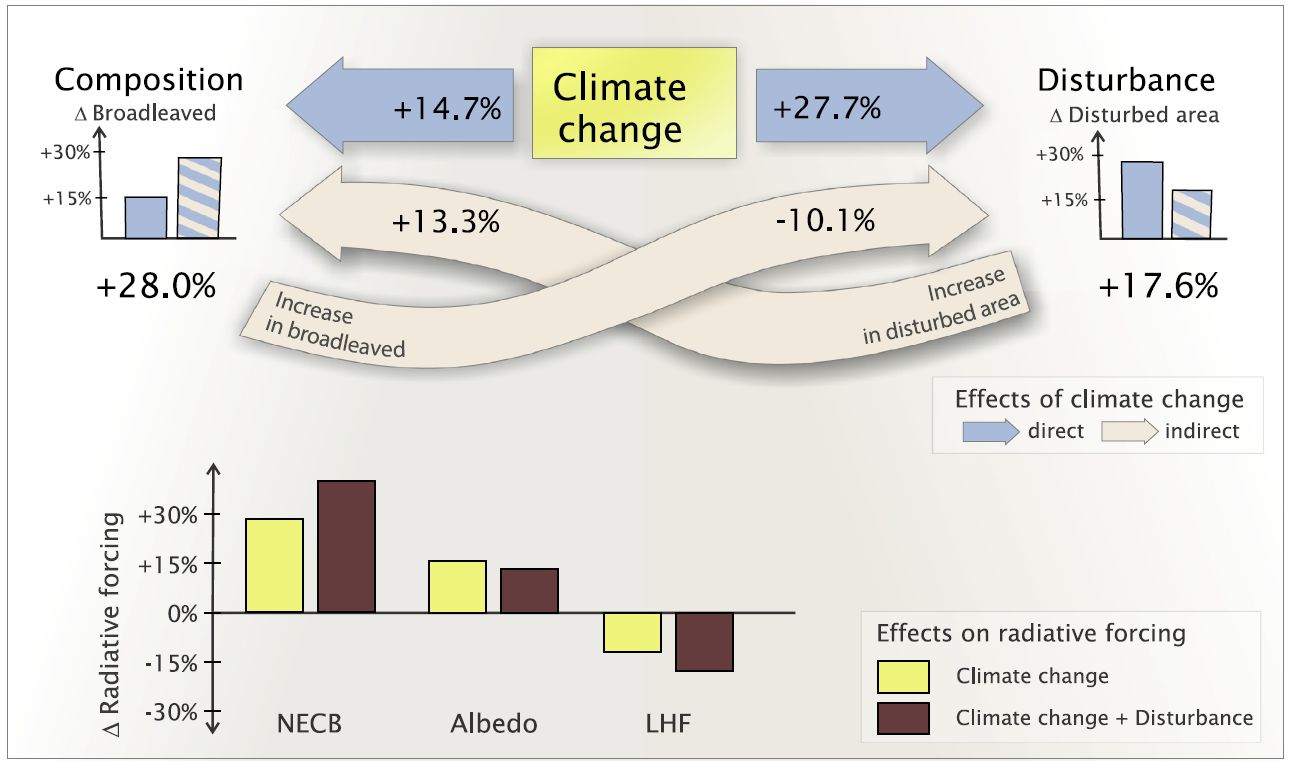What is the future role of forests in climate regulation?
Climate change simultaneously alters tree species composition and disturbance regimes. How these changes affect the climate regulation function of forests was quantified by a recent study published in Ecological Monographs.
Currently, the temperate forest biome cools the earth’s climate and mitigates anthropogenic climate change. However, climate change will substantially alter forest dynamics in the future: Increasing natural disturbances can reduce carbon uptake and evaporative cooling, but at the same time increase the albedo of a landscape. Simultaneous changes in vegetation composition can reduce disturbance impacts, but also influence climate regulation directly (e.g., via albedo changes). All hypothesized relationships are summarized in the figure below.

The current study addressed the interactive drivers of forest trajectories (changes in climate, vegetation, and disturbance) and their simultaneous effects on climate-relevant processes (carbon exchange, albedo, latent heat flux) in order to comprehensively assess the future climate regulation We investigated these issues using the individual-based forest landscape and disturbance model (iLand). Simulations were run over 200 years for Kalkalpen National Park (see figure below), assuming different future climate projections, and incorporating dynamically responding wind and bark beetle disturbances.

We found that climate change increased disturbances (+27.7% over 200 yr) and specifically bark beetle activity during the 21st century. However, negative feedbacks from a simultaneously changing tree species composition (+28.0% broadleaved species) decreased disturbance activity in the long run (-10.1%), mainly by reducing the host trees available for bark beetles.
To consistently assess the net effect of these changes on climate the simulated responses of carbon exchange, albedo, and latent heat flux were expressed as contributions to radiative forcing. Climate change and the resulting future forest dynamics significantly reduced the climate regulation function of the landscape, increasing radiative forcing by up to +10.2% on average over 200 yr. Overall, radiative forcing was most strongly driven by carbon exchange. We conclude that future changes in forest dynamics can cause amplifying climate feedbacks from temperate forest ecosystems.

More details can be found in the paper published in Ecological Monographs.